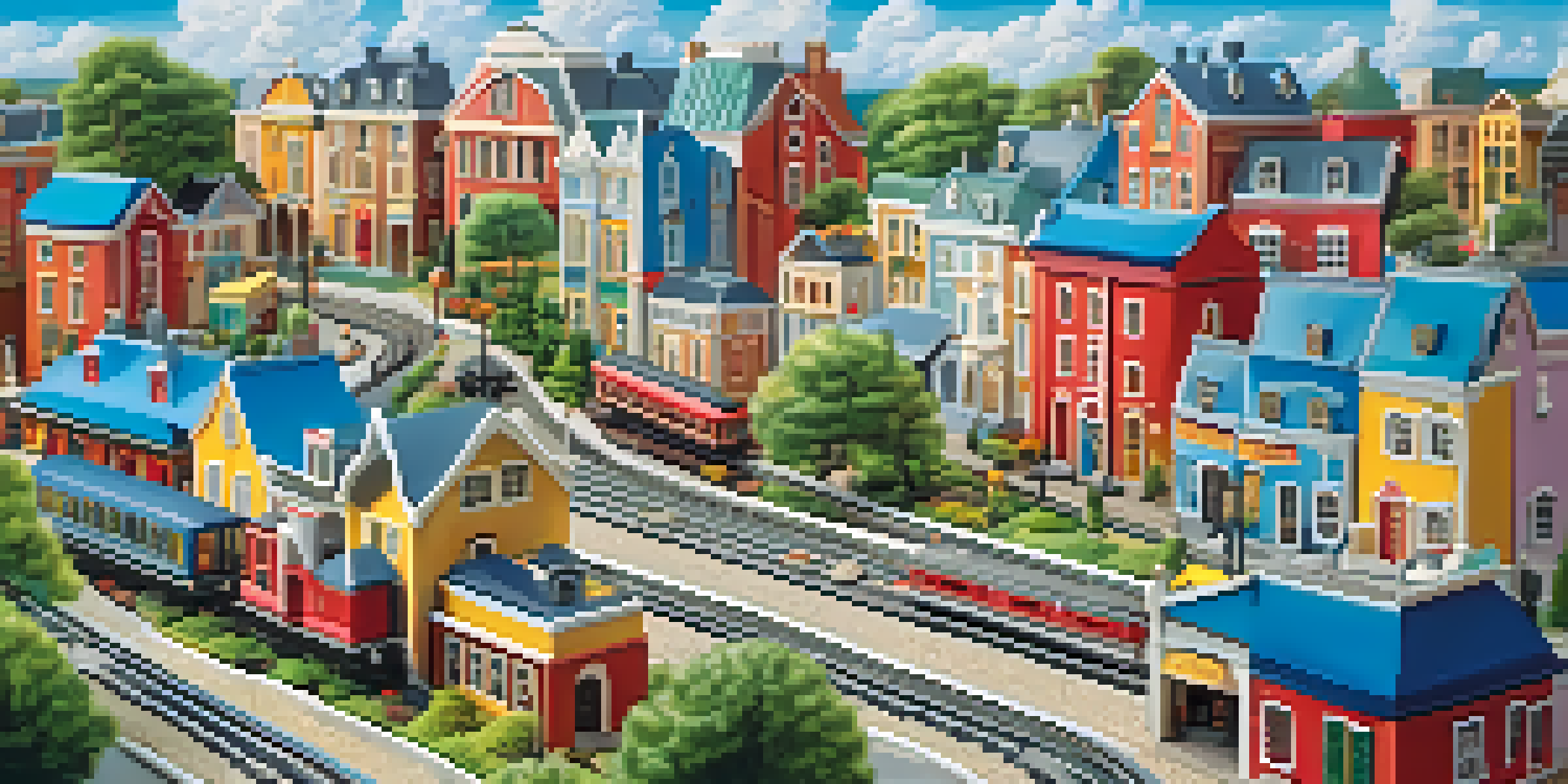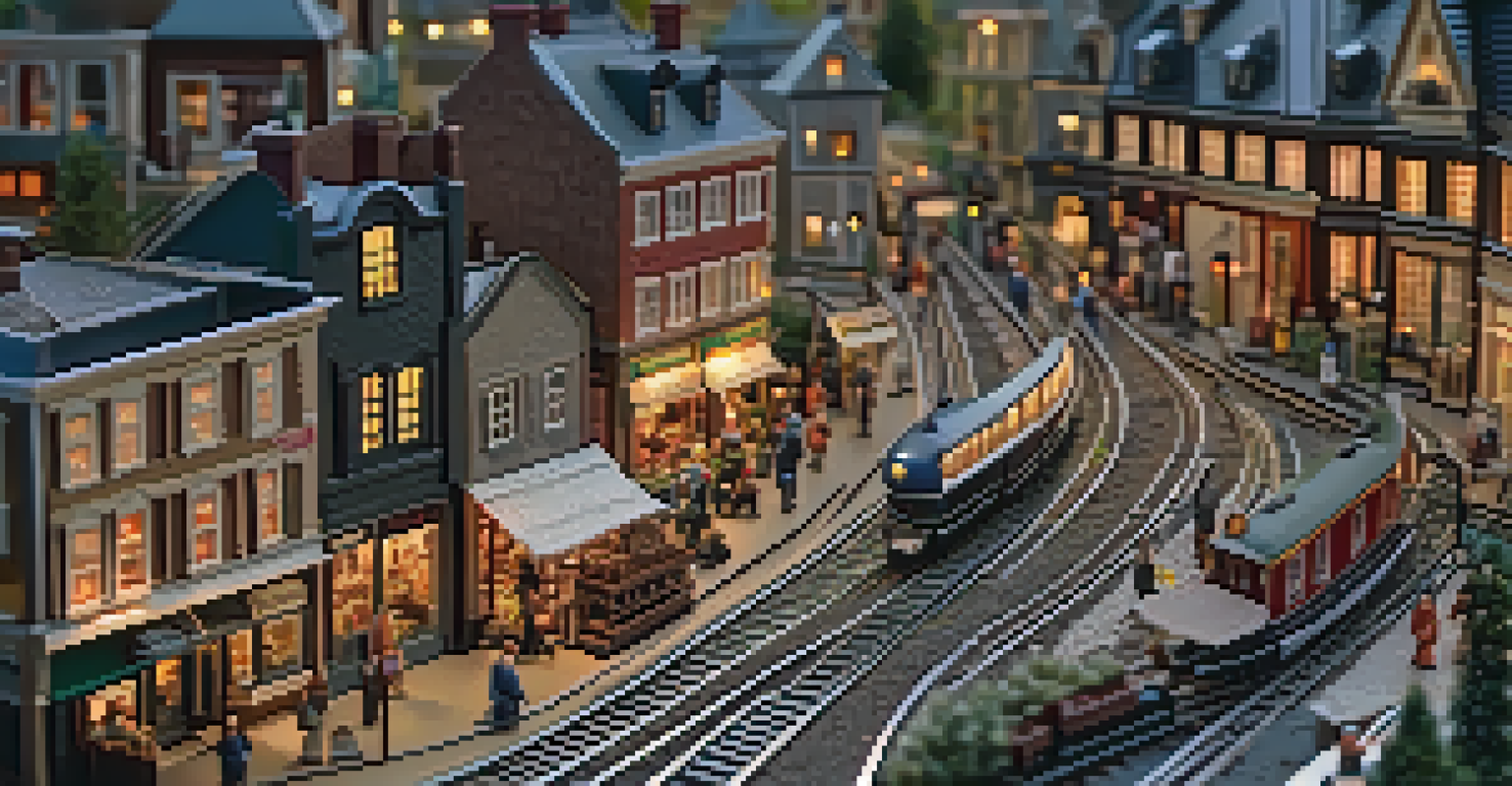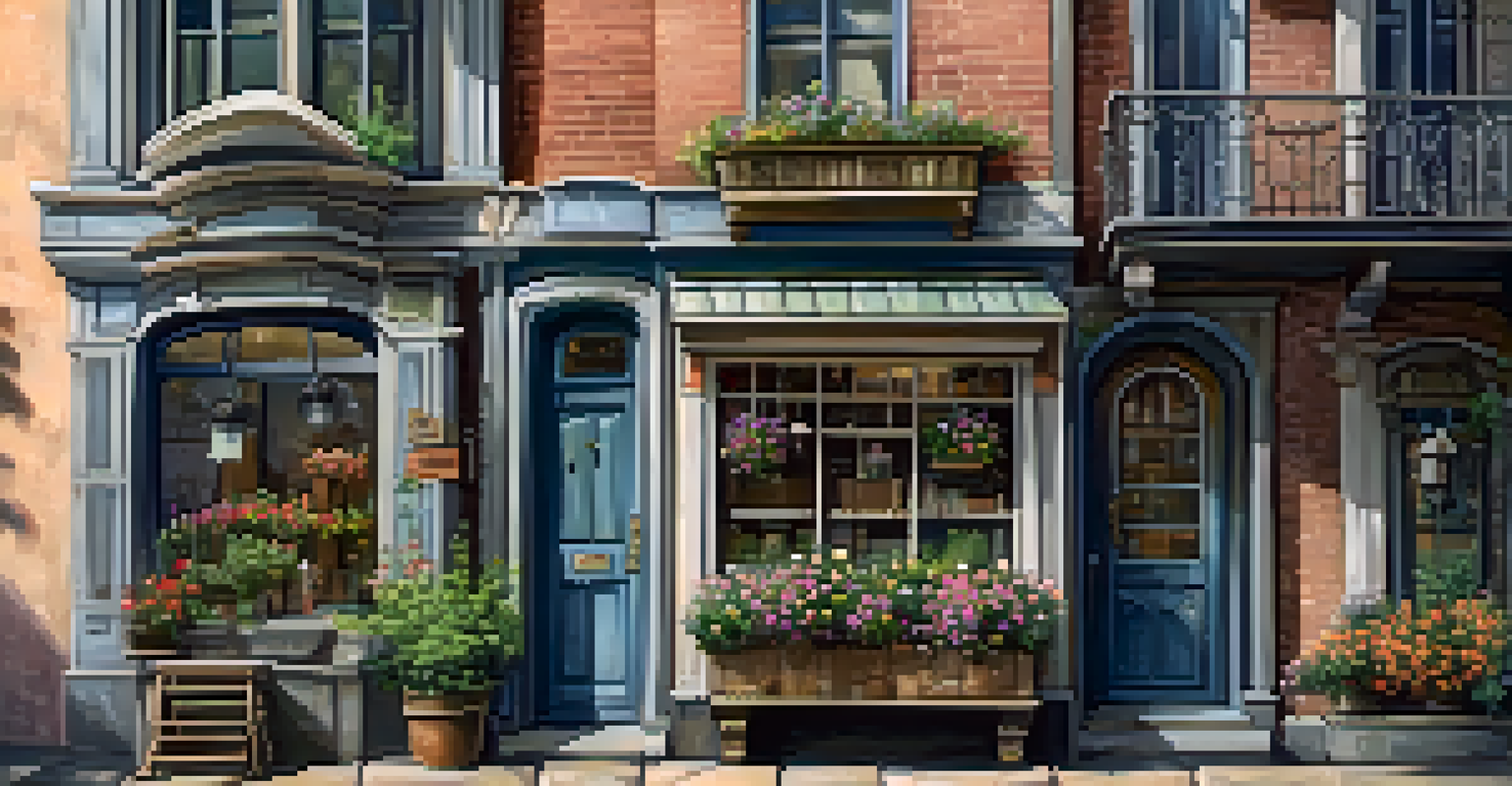Creating Miniature Towns: Structures for Model Railroads

Understanding the Basics of Miniature Towns
Miniature towns are enchanting replicas that add charm to model railroads. They serve as a backdrop for tiny trains, creating a narrative that brings the whole scene to life. Whether you’re a seasoned hobbyist or a curious beginner, grasping the fundamentals is the first step in your miniature adventure.
Creativity is intelligence having fun.
Consider the scale of your model railroad; this will dictate the size of your buildings and landscapes. Common scales like HO (1:87) or N (1:160) offer a range of possibilities, so choose one that resonates with your vision. Understanding these basics helps ensure that everything fits together harmoniously in your miniature world.
As you delve into this hobby, remember that each structure tells a story. From quaint shops to towering skyscrapers, every building can evoke a different atmosphere, contributing to the overall charm of your miniature town.
Choosing the Right Materials for Structures
The materials you select will greatly influence the look and feel of your miniature town. Common options include plastic, wood, and cardboard, each offering unique benefits. Plastic structures are often easy to assemble and can be detailed with paint, while wood provides a more authentic texture.

If you’re looking for a budget-friendly option, cardboard can be a great choice. It’s lightweight and allows for creativity, as you can easily cut and shape it into various designs. Plus, it’s forgiving for those who are just starting out in model building.
Foundations of Miniature Towns
Understanding the basics, such as scale and storytelling, is essential for creating a cohesive and charming miniature town.
Don’t forget to consider weather-resistant materials if you plan to display your town outdoors. Choosing the right materials sets the foundation for your miniature world and can make or break the overall aesthetic.
Planning Your Layout: The Blueprints of Imagination
Before diving into construction, it’s essential to plan your layout. Sketching a blueprint helps visualize where each structure will fit, ensuring a cohesive design. Consider the flow of your railroad tracks and how they interact with the buildings, as this will enhance the storytelling aspect of your model.
The best way to predict the future is to create it.
Incorporate elements like roads, parks, and rivers to create a balanced scene. These features not only add visual interest but also provide context for your structures. Think of your miniature town as a living community, where each element plays a role in the story.
Using online design tools or even simple graph paper can help refine your ideas. Taking the time to plan will save you headaches later on and lead to a more satisfying building experience.
Building Techniques: From Basic to Advanced
When it comes to construction, there’s a range of techniques to explore, from simple assembly to advanced detailing. Beginners can start with pre-made kits that offer a straightforward approach, allowing you to focus on placement and design. These kits often come with step-by-step instructions for ease.
As you gain confidence, consider exploring scratch-building techniques. This involves creating structures from raw materials, giving you full control over the design process. It's a creative challenge but can lead to truly unique buildings that stand out in your miniature town.
Materials Shape Your Town's Look
Choosing the right materials—like plastic, wood, or cardboard—can significantly impact the aesthetic and durability of your miniature structures.
Don’t shy away from experimenting with different styles and techniques. Every builder has a unique approach, and the beauty of this hobby lies in personal expression. Share your progress and learn from fellow enthusiasts to refine your skills.
Adding Details: The Finishing Touches Matter
Details are what truly bring your miniature town to life. Small features like window boxes, signs, and tiny figures can add layers of realism to your structures. These touches create a sense of scale and invite viewers to engage with your town’s story.
Consider using weathering techniques to give structures an aged look, or add landscaping elements like trees and bushes for depth. These details create a more immersive experience and encourage exploration of your miniature scene.
Remember, it’s the little things that often have the biggest impact. Take your time with this stage, as it allows you to showcase your creativity and craftsmanship.
Incorporating Technology: Enhancing Your Model Town
In today’s digital age, incorporating technology into your miniature town is more accessible than ever. Consider adding LED lighting to illuminate buildings, creating a warm ambiance that draws viewers in during the evening. This simple step can dramatically enhance the realism of your scene.
Additionally, you might explore sound modules that mimic the sounds of a bustling town. From train whistles to street noises, these auditory elements can create a more immersive experience, allowing viewers to feel like they’ve stepped into another world.
Details Bring Scenes to Life
Adding intricate details and incorporating technology can enhance realism and create an engaging experience for viewers of your miniature town.
Technology can also streamline your operations with remote-controlled trains and automated features. Embracing these advancements can elevate your hobby, transforming your model town into a dynamic, engaging environment.
Showcasing Your Miniature Town: Tips for Display
Once your miniature town is complete, you’ll want to show it off! Consider the best way to display your creation to highlight its features. A well-lit display case can protect your models while allowing viewers to appreciate the details you've painstakingly crafted.
If you have space, setting up a dedicated area where enthusiasts can view your town will foster community engagement. Hosting events or inviting friends over to see your work can turn your hobby into a shared experience, enhancing your enjoyment.

Don’t forget to document your progress through photos or videos. Sharing your journey on social media or hobby forums not only showcases your work but also connects you with fellow model railroaders who appreciate the art of miniature towns.